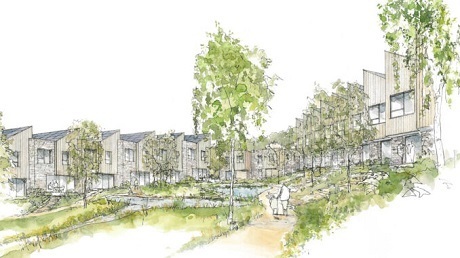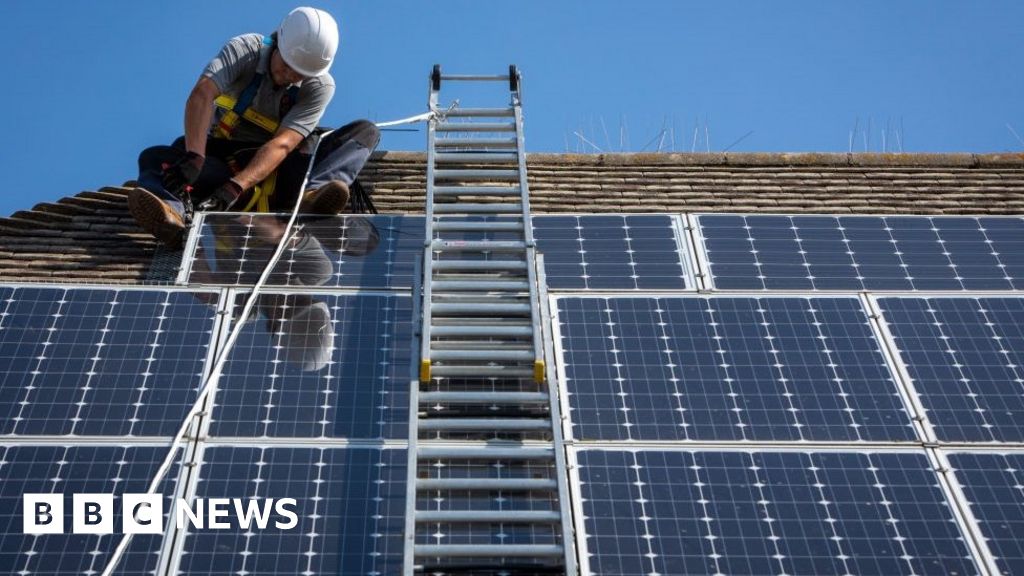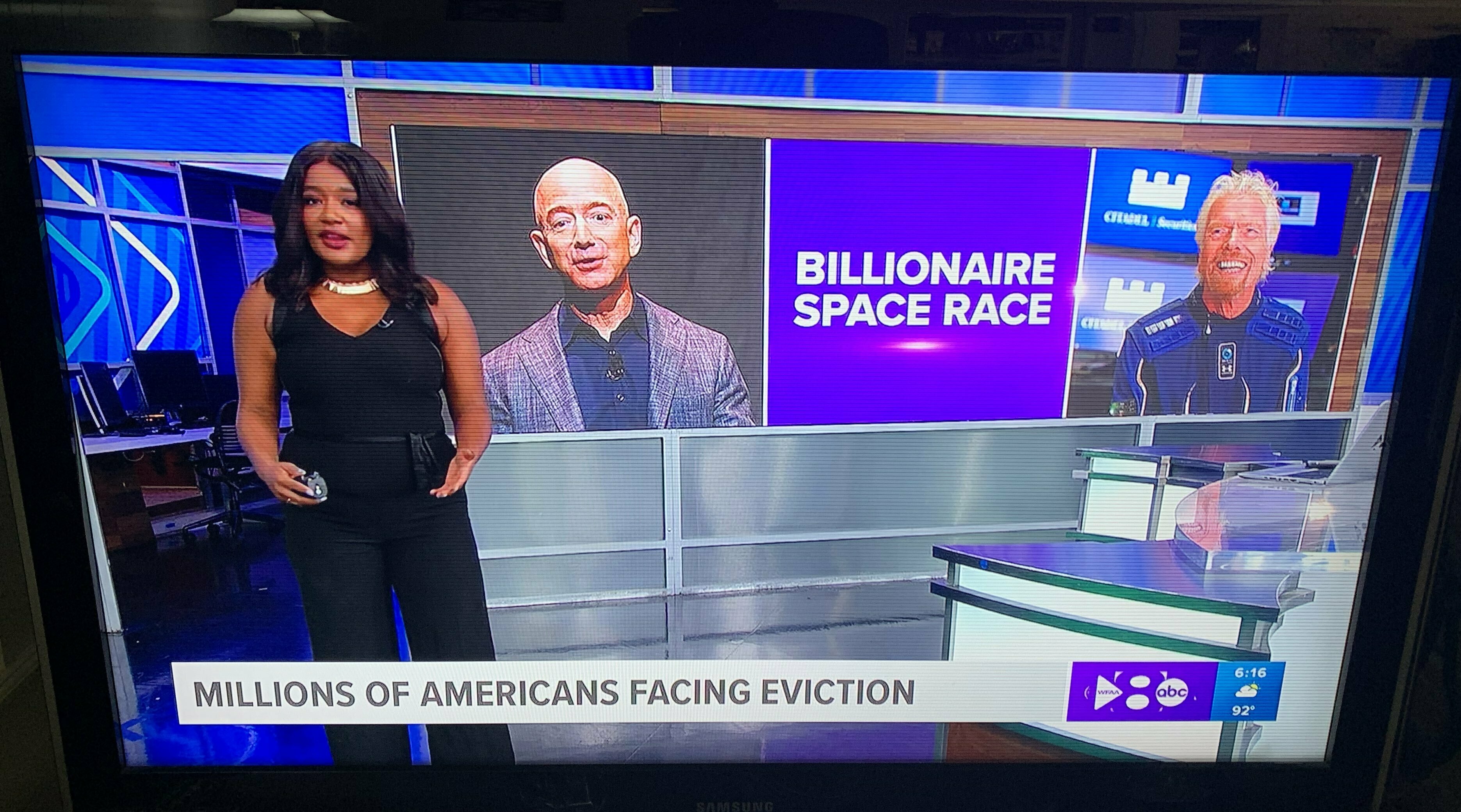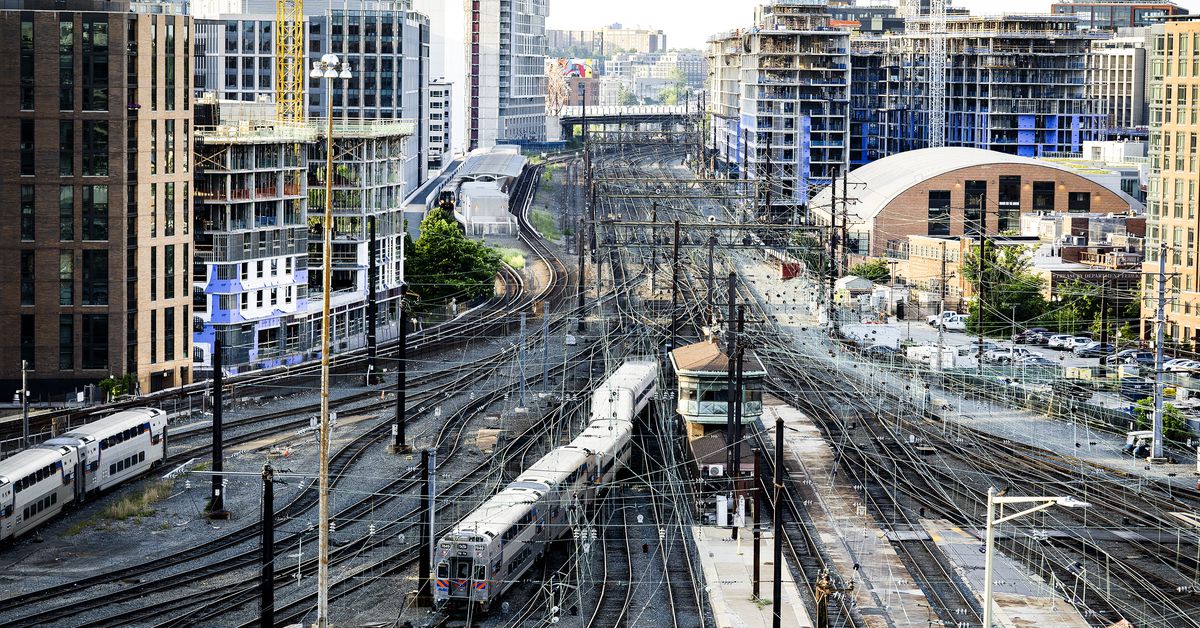3 Likes
#housing
CDC issues new ban on evictions of most US renters after protest
The US Centers for Disease Control and Prevention (CDC) has issued a new, 60-day moratorium on rental evictions, a move the United States public health agency said would protect about 90 percent of Americans.
The announcement on Tuesday comes amid a surge of COVID-19 cases linked to the spread of the Delta variant and follows the expiration on July 31 of the CDC’s previous ban on forced removals of millions of tenants who have been unable to pay rent during the pandemic.
The new ban applies specifically to US counties with “high levels of community transmission” of the virus, the CDC said in a statement. ...
https://www.aljazeera.com/news/2021/8/3/cdc-issues-new-eviction-ban-most-us-renters-after-protest
#covid19 #housing #eviction #EvictionBan #USCDC #renters #homelessness
6 Likes
1 Comments
A nationwide wave of evictions threatens more than six million families
The maps on this NYTimes piece are sobering.
Discussions often portray housing affordability as a San Francisco, or tech-region, or coastal section. The map on this article (enable JS to view) clearly shows that it is not: housing precarity as measured by households owing back rent is pervasive across the US, and especially concentrated well away from tech hot-spots: California's inland valleys, the deep south, a large swath of (very non-urban) South Dakota, likewise much of New Mexico. There are counties with high-delinquency rates in virtually every state.
The total accrued debt is $23 billion, $2,300 per household (this in a country in which half of all households cannot pay a $400 unexpected expense). A second map shows the amounts owed by household --- that shifts slightly more coastal (where rents are in fact higher in nominal terms) but again shows a pervasive problem.
It's not merely one of the too-common HN canard "you have no right to live in one of the most expensive region" --- this is unaffordability of a fundamental Maslovian need across an entire country. Something is very badly broken with how the US chooses to provision and manage its housing, and incomes (wages, pensions, welfare support).
https://www.nytimes.com/2021/07/28/opinion/covid-eviction-moratorium.html
Paywall: https://archive.is/742qv
#Housing #Poverty #Inequality #Evictions #Rent #Renting #LivingWage #Covid19
10 Likes
6 Comments
1 Shares
2 Shares
4 Likes
1 Shares
Why does it cost so much to build things in America?
Researchers have ruled out some of the more obvious potential explanations for why these projects cost more in the US.
As transit researcher Alon Levy writes in a report for the Niskanen Center, “This is not about our wealth: there is no correlation between a country’s GDP per capita and its subway construction costs. Nor is it about geological factors: the biggest factor behind a project’s cost is what country it is in, and costs are fairly consistent even across different geologies ... This is purely institutional.”
And when it comes to roads and the bulk of the high costs — “the new construction bit” — Turner says even though he has “no idea why those prices are increasing,” he can “eliminate a lot of things.” Turner explains that common theories like unions or the way we’re building roads or where we’re building them (for example, in more urban areas) are not supported by statistical evidence.
Time is money, money is power, power is delaying transportation projects
In looking at various forms of power, one point that's increassingly clear to me is that in a mature and multipolar society what exists are multiple power centres, each often with the effective capability to say "no". The word veto comes directly from the Latin, for "I forbid", and comes from that culture's multipolar power structure, the Senate.
There's also a lesson from warfare and combat, which is that the ability to induce damage or cost on an enemy whilst avoiding it oneself is also powerful. This is the difference between melee and ranged weapons (hand-to-hand, or tooth-and-claw, vs. ballistic or projectile weapons, see also "time-ranged" weapons in the form of traps and snares). "You don't have to be there for it".
Camouflage and armour afford similar capabilities, enabling attack with reduced risk (though also of course protecting against surprise attack).
The dynamics enabling NIMBY attacks are that stalling tactics don't incur consts or liabilities for those engaging in them. Sometimes this has merits, it very often does not, e.g., the delay of a bike-lanes project which sees scores of additional cycling and pedestrian deaths due to street traffic.
https://www.vox.com/22534714/rail-roads-infrastructure-costs-america
h/t Shane D. Phillips / #UCLALewisCenter
#housing #construction #constructionCosts #NIMBY #NEPA #Obstructionism #VetoPower #TimeIsMoney #MoneyIsPower
11 Likes
97 Comments
Liberalise planning rules to fix a #housing #crisis – sounds logical, but it won’t work
The government response to soaring inflation is to promise to build more #homes at speed by loosening the planning system. It is a “supply side” solution, which sounds logical: rapidly increase the number of homes being built and prices will inevitably come down. It is a highly contentious approach, which cost the Conservatives the Chesham and Amersham byelection, but it sounds as if it should work.
The problem is that the housing #market does not function like a pure market, and while the #UK does have some of the highest prices in the world the #affordability crisis is not a peculiarly British issue; it’s a global problem, with an index by the property consultants Knight Frank revealing that global residential prices have risen by more than 60% in the past 10 years.
Cities around the world, from Auckland to Vancouver, are facing an affordability crisis, with huge price rises and extreme gentrification in cities linked to global capital flows and foreign investment rather than local circumstances. This ensures that increased supply will not bring prices down; the new luxury apartment complexes that now characterise British cities such as London, Manchester, Bristol and York, to name but a few, remain out of reach for the majority of house buyers. Many are sold “off plan”, straight to foreign investors, before they have even been built.
The New Monopoly
https://twitter.com/aphilosophae/status/1402434266970140676
#housing #SFR #Blackrock #LateStageCapitalism
Thread.
— CulturalHusbandry (@APhilosophae) June 9, 2021
Blackrock is buying every single family house they can find, paying 20-50% above asking price and outbidding normal home buyers. Why are corporations, pension funds and property investment groups buying...https://t.co/uTagTOQQgI
1 Shares
Housing: The Three S’s: Supply, Stability, and Subsidy
[T]he solution to America’s housing crisis, both politically and technically, comes down to three coequal priorities that I call the Three S’s: Supply, Stability, and Subsidy....
[A]ll indispensable ingredients in the affordable city recipe book... One without the others will not bring true affordability and stability to a community—certainly not to all who need and deserve it. Nor can we simply enact the strongest possible intervention for one goal without considering its impacts on the others. Often, the most aggressive solution to one problem will undermine the best response to another.
Book: https://islandpress.org/books/affordable-city
HN discussion: https://news.ycombinator.com/item?id=26854819
#housing #homelessness #property #PublicOwnership #ShanePhillips #TheAffordableCity #books #BookReivews #BigProblems
One person like that
1 Comments
2 Likes
6 Shares
Millions of Americans Expect to Lose Their Homes as Covid Rages
(November 23, 2020)
Millions of Americans expect to face eviction by the end of this year, adding to the suffering inflicted by the coronavirus pandemic raging across the U.S.
About 5.8 million adults say they are somewhat to very likely to face eviction or foreclosure in the next two months, according to a survey completed Nov. 9 by the U.S. Census Bureau. That accounts for a third of the 17.8 million adults in households that are behind on rent or mortgage payments. ...
Roughly half of households not current on their rent or mortgage payments in Arkansas, Florida and Nevada think there’s a “strong chance” of eviction by early January. This equates to more than 750,000 homes where an eviction is the biggest worry, according to the survey.
By metro area, the threat of eviction is most pressing in New York City, Houston and Atlanta.
#housing #eviction #homelessness #covid19 #PostCovid #EconomicJustice
One person like that
6 Comments
suicide prevention...
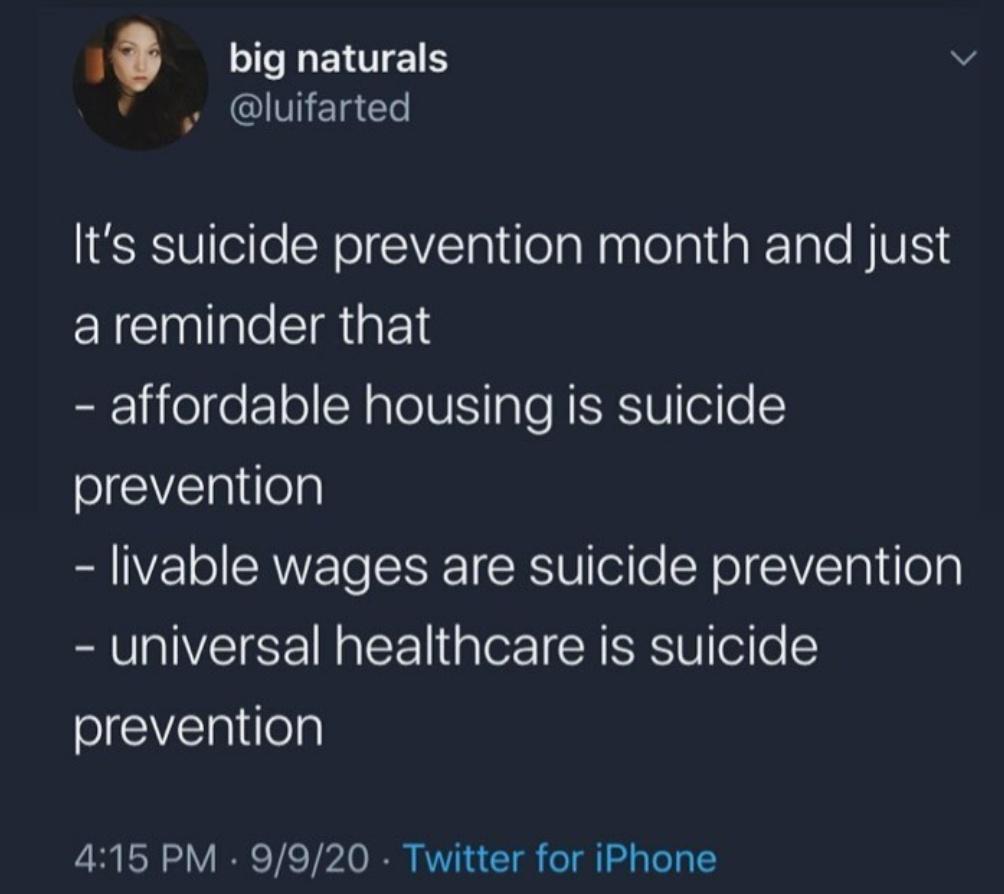
#suicide #prevention #housing #affordable #livingwage #raisethewage #universalhealthcarenow #usa #tweet #screenshot
One person like that
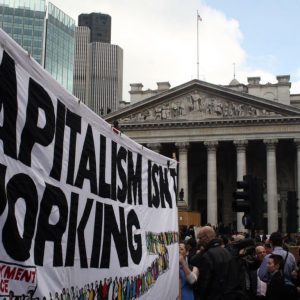
Capitalism’s Decline Accelerates
https://www.youtube.com/watch?v=X6vrc1mPsNo
https://www.democracyatwork.info/globalcapitalism_sept2020
#global #capitalism #decline #accelerates #prof #richarddwolff #wolff #democracyatwork #capitalist #crash #social #effects #failures #scapegoating #pandemic #covid19 #systemic #racism #budget #collapse #housing #eviction #professional #athletes #organized #labor #emerging #fascism #irony
1 Comments
Some notes and questions on the documentary W1555 – Conversations with an Accidental Community
Why did the documentary stay so firmly within the bubble of W1555 residents, or, to be more precise:
Why was the neighborhood of W1555 only referred to in the third person? Why were there no conversations with people in living in Oud Charlois as neighbors of W1555? Why was, apparently, not the whole neighborhood invited for the screening of the film? (That became obvious on the second screening night when a man angrily complained about the noise on the street.)
Why the lack of reflection on class and race in the film (both in the interview statements included in the film and in the selection of people given a voice in it) when the subject matter - social housing in Rotterdam - has so much to do with it? Why no (historical and present-day) research into the politics of housing in Rotterdam South? Why no reflection on “creative class” gentrification and the larger political agenda behind it (among others, through the City Council and the National Program Rotterdam South with its declared agenda of ending the so-called “Un-Dutch problems” of Rotterdam South)? With more than one hour running time of the film, there would have been enough room for digging deeper.
Why no appearance, and not even a mention, of the people who put so much work, heart, caretaking and emotional labor into the Wolphaertstraat community, like Kamiel Verschuren? Why no appearance or mention of people who were centrally involved in W1555 but quit because they were critical of its politics, like Jeroen Jongeleen?
Why no questions or research about what happened to the former precarious inhabitants of Wolphaertstraat - such as the drug addicts who were repeatedly mentioned by the interview partners? Why that indifference by everyone?
My video [made from more than 2000 high-speed still photos] of the open air screening/premiere of W1555 – Conversations with an Accidental Community, a documentary by Honey Jones-Hughes on the artist-run housing project W1555 in Rotterdam, Oud-Charlois, Wolphaertstraat, screened at Charlois Speciaal festival August 15 2020:
https://vimeo.com/448329128
#art #housing #artist-run #Rotterdam #Netherlands #gentrification #socialhousing
Gimme Shelter
I think the landlords should take a haircut on this, and count their blessings.
https://twitter.com/cnbc/status/1281722948634771458
32% of U.S. households missed their July housing payments. (via @CNBCMakeIt) https://t.co/8eVk7CROTG
— CNBC (@CNBC) July 10, 2020
1 Shares
SF, Silicon Valley rents plunge amid downturn: 'Never seen anything like it'
... Rents for a one-bedroom apartment dropped most in the cities richest in high-paying tech jobs, falling 9.4% in San Francisco compared with May of 2019. In Mountain View, home to Google, rents fell 15.9% year over year, while in Apple’s hometown of Cupertino rents dipped 14.3%, according to the rental search engine Zumper. In San Bruno, where YouTube has its offices, rents tumbled 14.9%.
“It’s a dramatic drop in San Francisco and the South Bay,” said Zumper CEO Anthemos Georgiades. “This is real. We have never seen anything like it.”
While rents are down across the country, the drop was more severe in high-priced coastal cities that over the past decade have been most attractive to tech entrepreneurs and their investors, Georgiades said. Several of the biggest employers in those cities, including Facebook and Google, are allowing employees to work from home through the end of the year, while San Francisco’s Twitter and Square have said many employees will be allowed to work remotely permanently. ...
#rent #sanfrancisco #siliconValley #StartUps #LVT #housing #economy #economics #covid19
One person like that
Mortgage industry can't make the rent
The problem is that mortgage servicers, even after granting homeowners forbearance, are still on the hook with investors to continue paying principal and interest on the mortgages. They also must make payments to mortgage insurers, property insurers and local tax authorities.
Maybe serve them a 48 hour pay-or-quit.
2 Comments
Can Eviction Moratoriums Stop The Bleeding?
(On the Media) 2020-3-18
Duration: 14:25.
Episode: http://www.wnycstudios.org/story/can-eviction-moratoriums-stop-bleeding/
Media: https://www.podtrac.com/pts/redirect.mp3/audio.wnyc.org/otm/otm031820_podextra.mp3
From Miami to Massachusetts, from San Francisco to Pittsburgh to New York, housing courts are closing up and marshals are standing down ...
#housing #eviction #homelessness #covid19 #podcasts #OnTheMedia
2 Comments
Coronavirus makes homeless people vulnerable like never before
To be able to self-quarantine is a privilege, kind of like stocking up on groceries and singing a nursery rhyme while washing your hands. When you live on the streets, potable water is too precious to use on your hands.
Michael Stein, a professor of health law, policy and management at Boston University, says we should have known something like this was coming. He’s the co-author of “Pained: Uncomfortable Conversations about the Public’s Health,” a timely book about disease prevention that will be published next month. Stein pointed out that in China, where the coronavirus originated, much of the transmission was between family members in shared households. Homeless shelters are households....
One person like that
2 Comments
Ceci n'est pas une maison/This is not a house

Bel hommage à #Magritte en son pays, capturé par un de mes blogs préférés !
#fun #blog #tumblr #housing #uglybelgianhouses #belgium #belgië #belgique #be
One person like that

